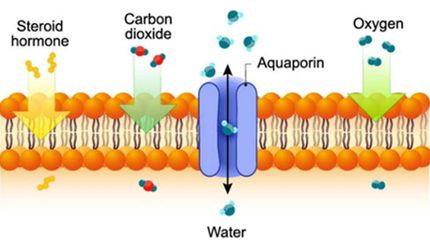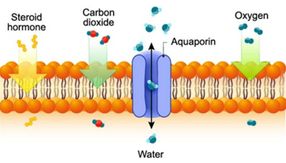Bio-Logic Science Instruments
How to use stop-flow measurement techniques to obtain information about membrane transport kinetics?

An overview and experimental recommendations for a successful evaluation of cell permeabilities
Aquaporins are important and well-studied water channel membrane proteins. They form pores in the membranes of biological cells, facilitating the transport of water between cells. Such a reaction can be generated by mixing purified membrane vesicles with a hyper-osmotic solution. The imposed concentration gradient induces a fast flow of water out of the vesicles. Hence, the volume of the vesicles is reduced and the concentration of the inner medium increases. This kinetics shrinkage stops when the inner concentration is identical to that of the surrounding one. The change in the size of the vesicles can be detected by the scattered light intensity at 90°. The intensity of the light scattering signal increases when the vesicle size decreases. Alternatively, vesicles can be loaded with a fluorescent dye with concentration-dependent quenching properties. The reaction rates of the swelling or shrinking kinetics give direct information about cell permeability, but the experiment must be well planned: Which wavelength to use? How fast should I inject solutions? How much sample do I need?
Advertisement



